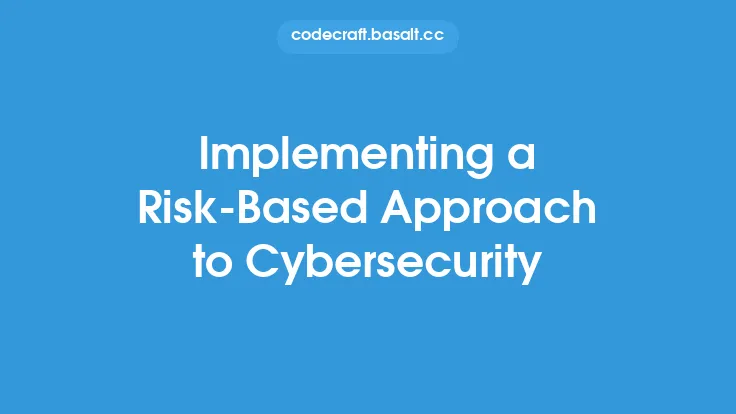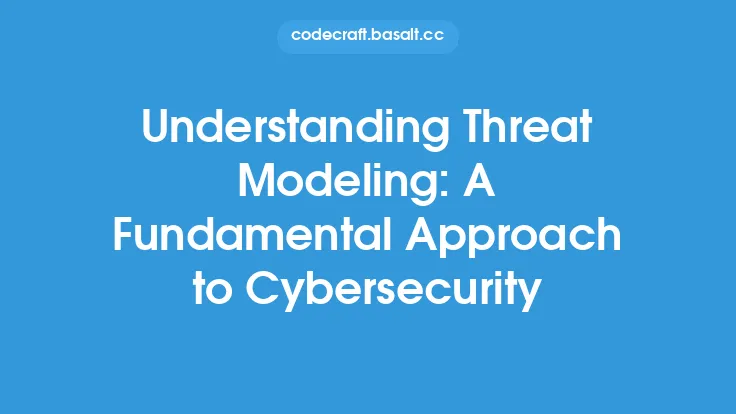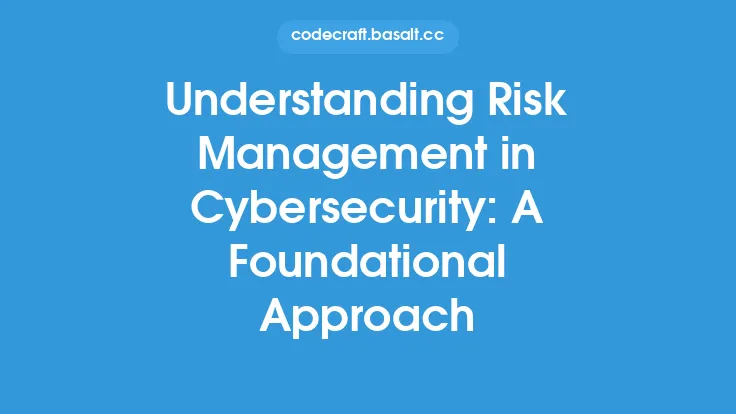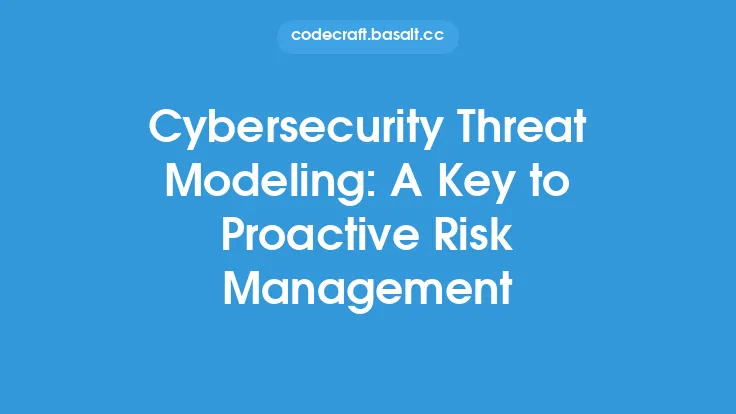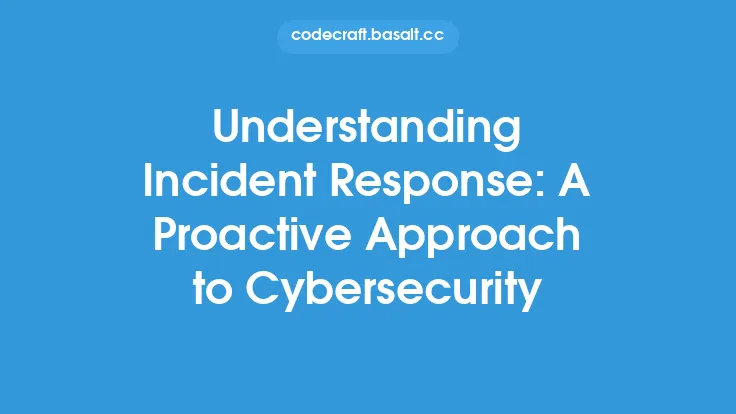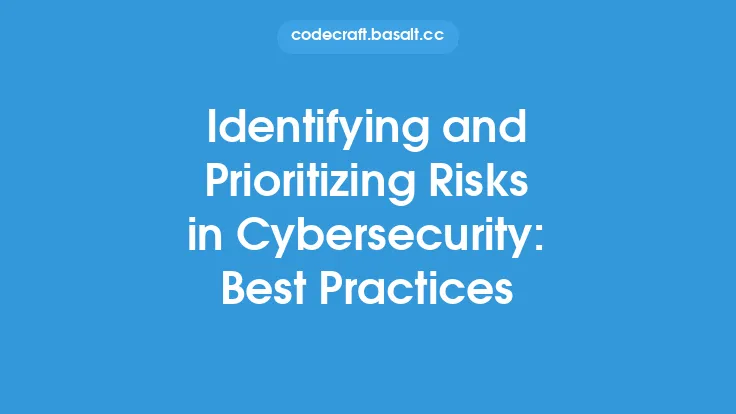In the realm of cybersecurity, identifying threats is a critical component of any risk assessment strategy. As technology continues to evolve and new vulnerabilities emerge, organizations must adopt a structured approach to threat modeling in order to stay ahead of potential threats. This involves a thorough analysis of the organization's assets, vulnerabilities, and potential attack vectors, as well as the implementation of effective countermeasures to mitigate risk.
Introduction to Threat Modeling
Threat modeling is a systematic and structured approach to identifying, analyzing, and prioritizing potential threats to an organization's assets. It involves a comprehensive review of the organization's security posture, including its people, processes, and technology, in order to identify vulnerabilities and weaknesses that could be exploited by attackers. The goal of threat modeling is to provide a proactive and preventive approach to cybersecurity, rather than simply reacting to incidents after they occur.
Key Components of a Threat Modeling Approach
A comprehensive threat modeling approach typically involves several key components, including asset identification, threat identification, vulnerability analysis, and risk assessment. Asset identification involves identifying the organization's critical assets, such as data, systems, and infrastructure, and prioritizing them based on their level of importance and sensitivity. Threat identification involves identifying potential threats to these assets, including malicious actors, natural disasters, and other types of disruptions. Vulnerability analysis involves analyzing the organization's vulnerabilities and weaknesses, including technical, procedural, and human factors. Finally, risk assessment involves evaluating the likelihood and potential impact of each identified threat, and prioritizing them based on their level of risk.
Threat Identification and Analysis
Threat identification and analysis is a critical component of the threat modeling process. This involves identifying potential threats to the organization's assets, including malicious actors, such as hackers and cyber terrorists, as well as non-malicious threats, such as natural disasters and system failures. Threat analysis involves evaluating the capabilities, motivations, and intentions of potential attackers, as well as the potential impact of each identified threat. This information is used to inform the development of effective countermeasures and mitigation strategies.
Vulnerability Analysis and Risk Assessment
Vulnerability analysis and risk assessment are also critical components of the threat modeling process. Vulnerability analysis involves identifying and analyzing the organization's vulnerabilities and weaknesses, including technical, procedural, and human factors. This includes evaluating the organization's security controls, such as firewalls, intrusion detection systems, and encryption, as well as its incident response and disaster recovery plans. Risk assessment involves evaluating the likelihood and potential impact of each identified threat, and prioritizing them based on their level of risk. This information is used to inform the development of effective countermeasures and mitigation strategies.
Countermeasures and Mitigation Strategies
The final component of the threat modeling process involves the development and implementation of effective countermeasures and mitigation strategies. This includes implementing security controls, such as firewalls, intrusion detection systems, and encryption, as well as developing incident response and disaster recovery plans. It also involves providing training and awareness programs for employees, as well as conducting regular security audits and risk assessments to ensure the continued effectiveness of the organization's security posture.
Benefits of a Structured Approach to Threat Modeling
A structured approach to threat modeling provides several benefits, including improved risk management, enhanced security posture, and increased compliance with regulatory requirements. By identifying and analyzing potential threats, organizations can take a proactive and preventive approach to cybersecurity, rather than simply reacting to incidents after they occur. This can help to reduce the likelihood and potential impact of security incidents, and minimize the risk of financial loss, reputational damage, and other negative consequences.
Best Practices for Implementing a Threat Modeling Approach
Several best practices can help organizations to implement a effective threat modeling approach, including establishing a cross-functional threat modeling team, conducting regular security audits and risk assessments, and providing training and awareness programs for employees. It is also important to stay up-to-date with the latest threat intelligence and security trends, and to continuously monitor and evaluate the organization's security posture. By following these best practices, organizations can ensure that their threat modeling approach is effective, efficient, and aligned with their overall cybersecurity strategy.
Common Challenges and Limitations
Despite the benefits of a structured approach to threat modeling, several common challenges and limitations can make it difficult for organizations to implement and maintain an effective threat modeling program. These include limited resources and budget, lack of expertise and training, and the constantly evolving nature of cyber threats. Additionally, many organizations struggle to prioritize and manage the large volume of threat intelligence and security data that is available, and to integrate threat modeling into their overall cybersecurity strategy. By understanding these challenges and limitations, organizations can take steps to overcome them, and ensure that their threat modeling approach is effective and sustainable.
Future Directions and Emerging Trends
The field of threat modeling is constantly evolving, with new technologies, techniques, and trends emerging all the time. Some of the future directions and emerging trends in threat modeling include the use of artificial intelligence and machine learning to enhance threat detection and response, the integration of threat modeling into the development of secure software and systems, and the use of cloud-based and hybrid threat modeling approaches. Additionally, there is a growing focus on the importance of threat modeling in emerging technologies, such as the Internet of Things (IoT) and cloud computing. By staying up-to-date with these emerging trends and technologies, organizations can ensure that their threat modeling approach is effective, efficient, and aligned with their overall cybersecurity strategy.
